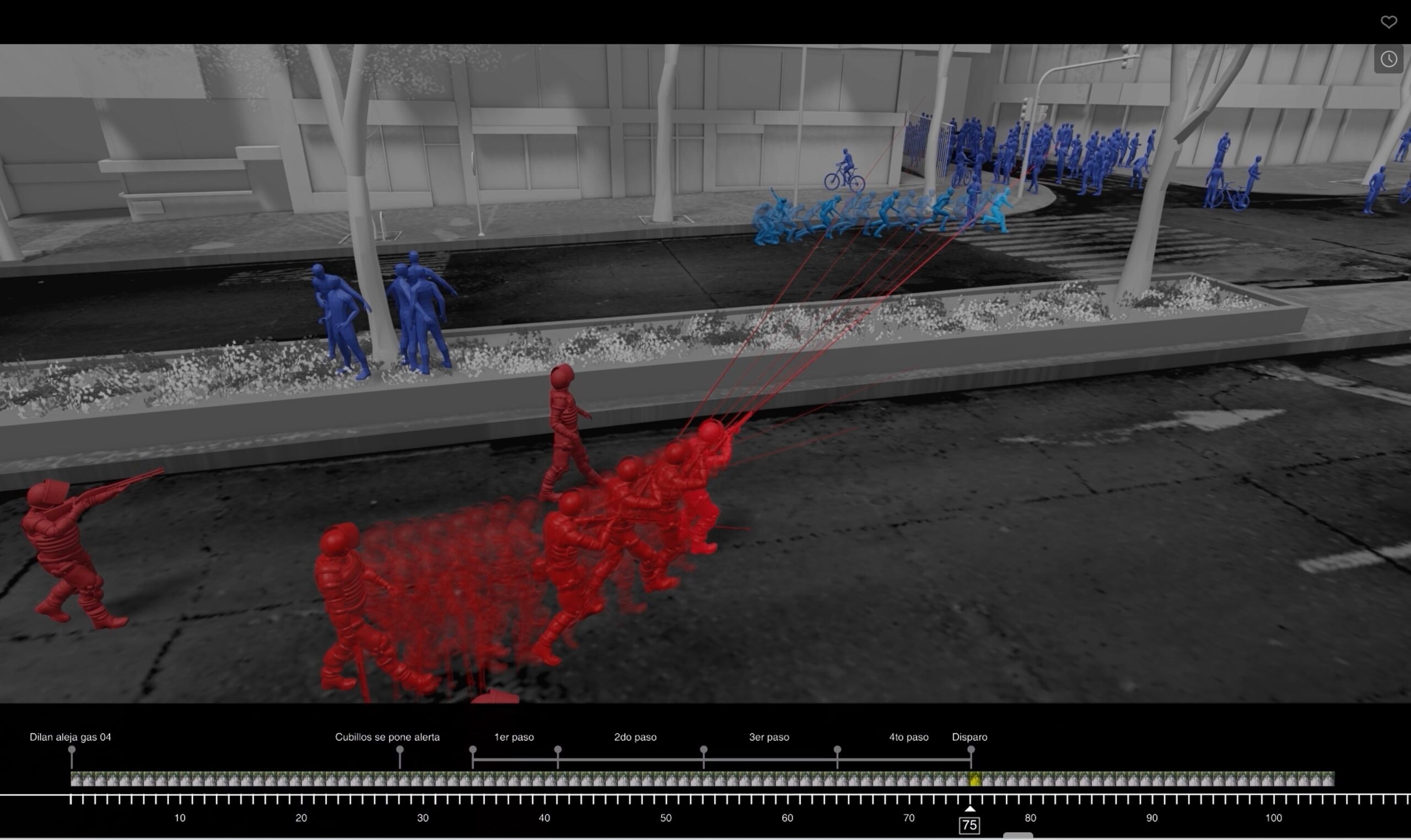
Plano Negativo: Colectivo de Investigación de Arquitectura Forense en Colombia is a collective of visual artists, architects, social scientists, earth scientists, designers, and artists who conduct collaborative investigations on human violence and environmental conflicts in Colombia and Latin America. Plano Negativo is a transnational collaboration with collaborators based in Colombia, Portugal, Spain, UK, and US.
The project began with the collaboration between Forensic Architecture and the Colombian Truth Commission, which was published in Bogota in December 2021. The work gathered significant interest in the country, and different Colombian groups asked for support for their endeavors. With the help of CHRA, Plano Negativo started an inquiry into the case of Dilan Cruz, a teenager who was murdered by police in the 2019 national strike in Bogota.
The support of CHRA helped Plano Negativo to conduct an investigation and to start the process of working with Colombian architects, designers, lawyers and animators to establish a studio in the country.
At the moment, Plano Negativo is working with several organizations in Colombia:
The Comité de Solidaridad con Presos políticos, a human rights group created 50 years ago by Gabriel Garcia Marquez and considered the oldest human rights organization in the country. They are in charge of the Dilan Case.
Colectivo de Abogados Jose Alvear Restrepo, one of the most renowned Latin American human rights NGO. They worked on a case that was part of the Truth Commission, and are now collaborating with Plano Negativo on a case involving coal mining and environmental violence.
Terrae, an NGO of geographers, biologists, geologists and earth scientists who support grassroots organizations in environmental conflicts. Plano Negativo is working with them on cases dealing with environmental violence.
In addition to The Killing of Dilan Cruz, Plano Negativo is currently conducting two other investigations: Sculptures of devastation: a visual history of coal mining in the Colombian Caribbean; and Deforestation in the Colombian Amazon. Finally, the work supported by CHRA has helped in the construction of a Latin American network of visual counter forensics with other groups in Mexico and Brazil.
The case of Dilan Cruz has several different outcomes and presentation forums.
Images 1 – 8 from “The Case of the Killing of Dilan Cruz” (current, ongoing project):
Images 9 – 11 from previous projects focused on land dispossession in northwestern Colombia: